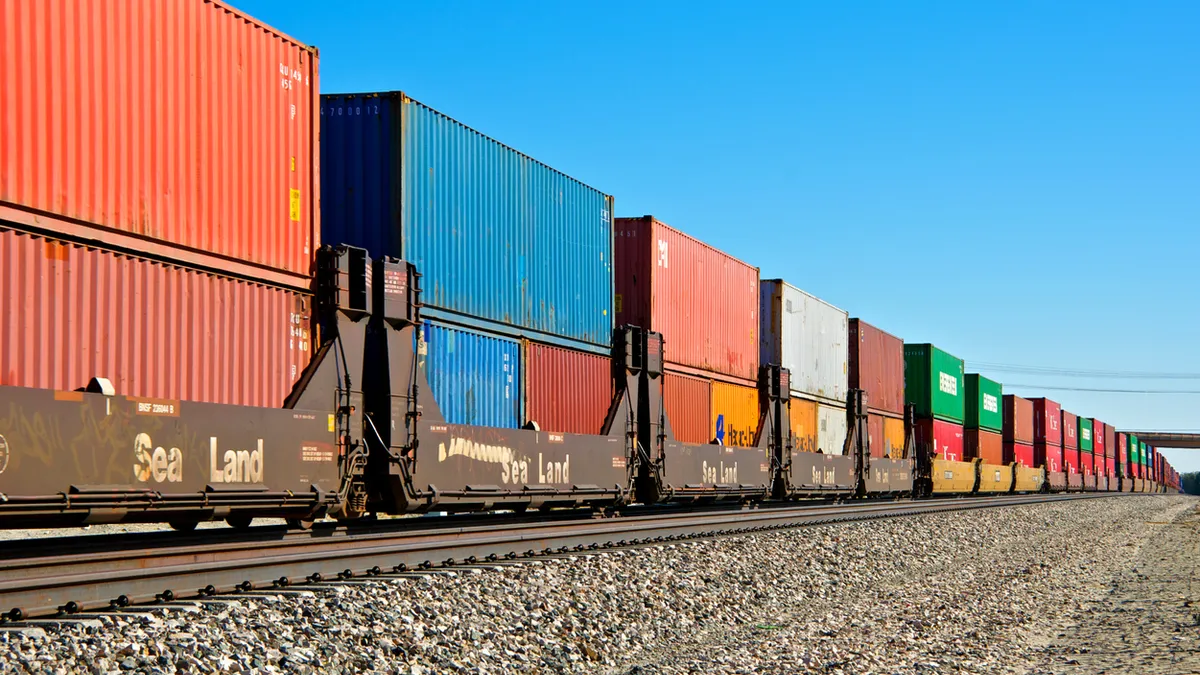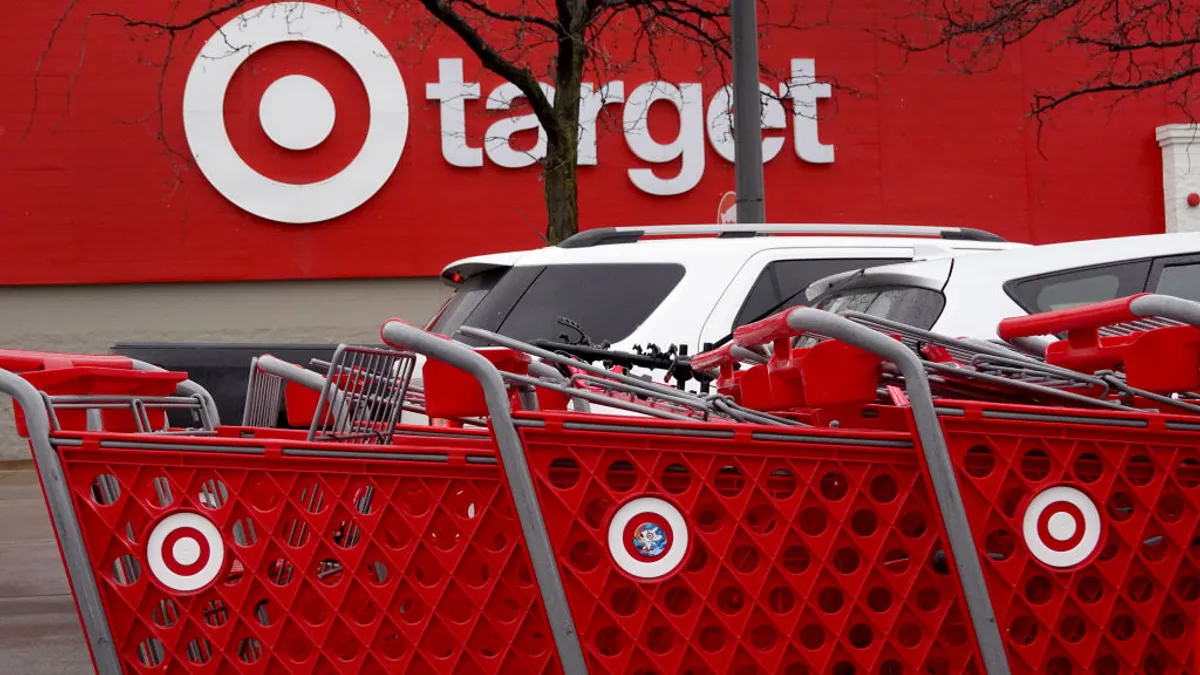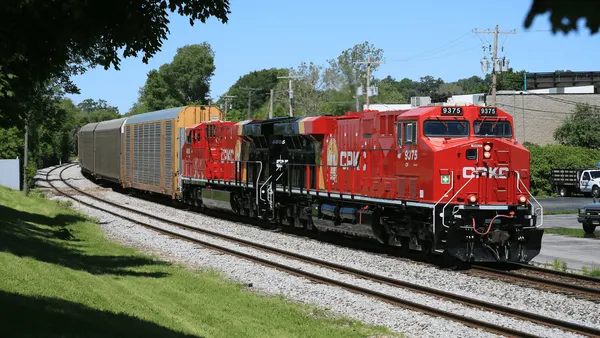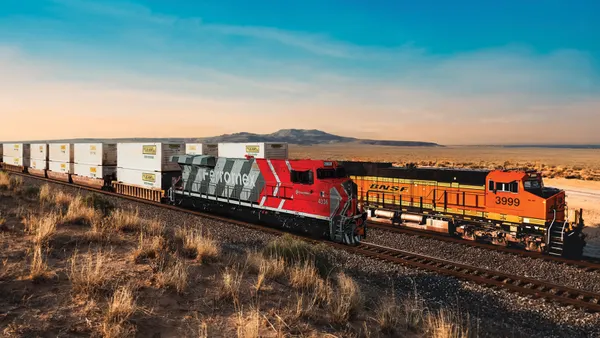Many intermodal shippers receive rail tracing data from a trucking or ocean carrier, but often, it’s not granular enough to effectively understand ETAs, pickup times and challenges that might arise enroute.
Event reporting
Automated Equipment Identification – or AEI – has been the backbone of rail movement event reporting for several years. AEI “tags” are bolted onto railcars that contain a chip that identifies the railcar mark and the number. As the railcar passes by a trackside AEI scanner, the scanner reads the tag and records the time and place. That information is then transmitted to the railroad and stored as an “event.”
That process has always worked very well for railcars, but containers don’t have an AEI tag.
When a container is loaded on a well or flat car, the railroads create an association between the container(s) and the well car in their system. As a well car garners events, the railroad creates a matching event for the associated containers.
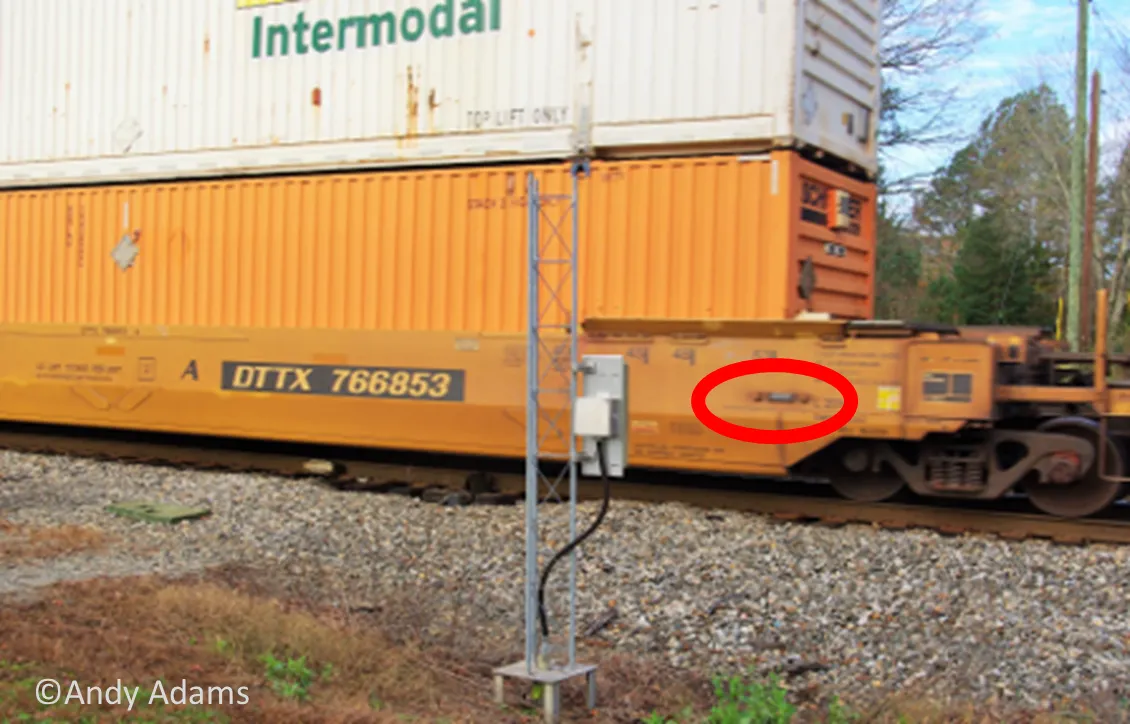
GPS vs AEI for tracing
For tracing purposes, a GPS reading by itself mostly represents a point moving on a map. It can also show as being inside of specifically designated “geo-fences” such as serving yards, customer yards, repair shops, etc. It can also show where the railcar down a few feet of accuracy. But what happens when the point in space stops moving? What does it mean?
With only GPS, it can be difficult to tell why the car has stopped moving.
Maybe the car has been bad ordered, cut out of the train and placed on a siding or repair track. Has the car derailed? Is the train delayed because the crew timed out?
In all of those and other situations it’s good to know what has happened with the railcar, requiring event data.
What events will you see during a container trip?
Railinc, the rail industry data repository, receives approximately five million intermodal events per day on container moves. These events include:
- Arrival and departure events at scanners
- Arrival at final destination
- Grounding
- Notification when available
- Chassis unties
- Outgates
- Estimated time of grounding
- Arrival in transit
- Boundary crossings
- Interchange events
- Estimated time of notification – both tactical and locked
- Pick-up number
- Any related hold events
- ETA
- And more
Key metrics:
Keeping an eye on critical events during your container trips enables you to act on scenarios such as long dwells before they become critical issues. Here are a few key metrics to track during your trips:
Beginning of trip:
- Containers that have come through the gate but not been loaded in 48+ hours
- Containers that have been loaded on the train but have not yet departed the port or intermodal ramp in 48+ hours on their trip.
During the trip:
- When the container has not moved in 48+ hours: This indicates that there is some kind of dwell issue where the container is not moving and could be late for its arrival. This is particularly important with refrigerated containers, since significant dwell could cause these units to lose power and the spoilage of commodities.
- Boundary crossings and customs re-ramping: this enables visibility into if a container was pulled off the train for randomized customs inspections and then reloaded on a train to resume its trip.
End of trip:
- ETA: With tight margins and a defined time of free storage for the container once it’s arrived, ETA is critical to know approximately when to schedule your dray carrier to show up at the intermodal ramp to pick up the box.
- ETA is provided by each railroad’s estimate of how long the trip will take on their line. When, for whatever reason, a railroad does not report the ETA, Railinc will provide a Predictive ETA based on the last 90 days of shipments in that lane.
- Arrival at final: signifies that the container has arrived at the final destination ramp. It is also the event that the Estimated Time of Arrival (ETA) is typically measured to. The arrival, however, does not mean that the container will immediately be grounded. It could be some hours or even days before the container is grounded. You should build a report that shows you, for instance, when your containers have received an arrival event but not been removed from the train:
- The notification event that the container is ready to be picked up is also a vital event in that it typically begins the period of the Last Free Day (LFD) calculation. The notification event is often generated systematically by the DRMP event. Without this key event, you won’t have visibility into when you free time to pick up the container begins.
Hours make a difference in the world of transportation. Setting alerts and notifications for key events in your rail trips can prevent commodity spoilage, delays and fees.

